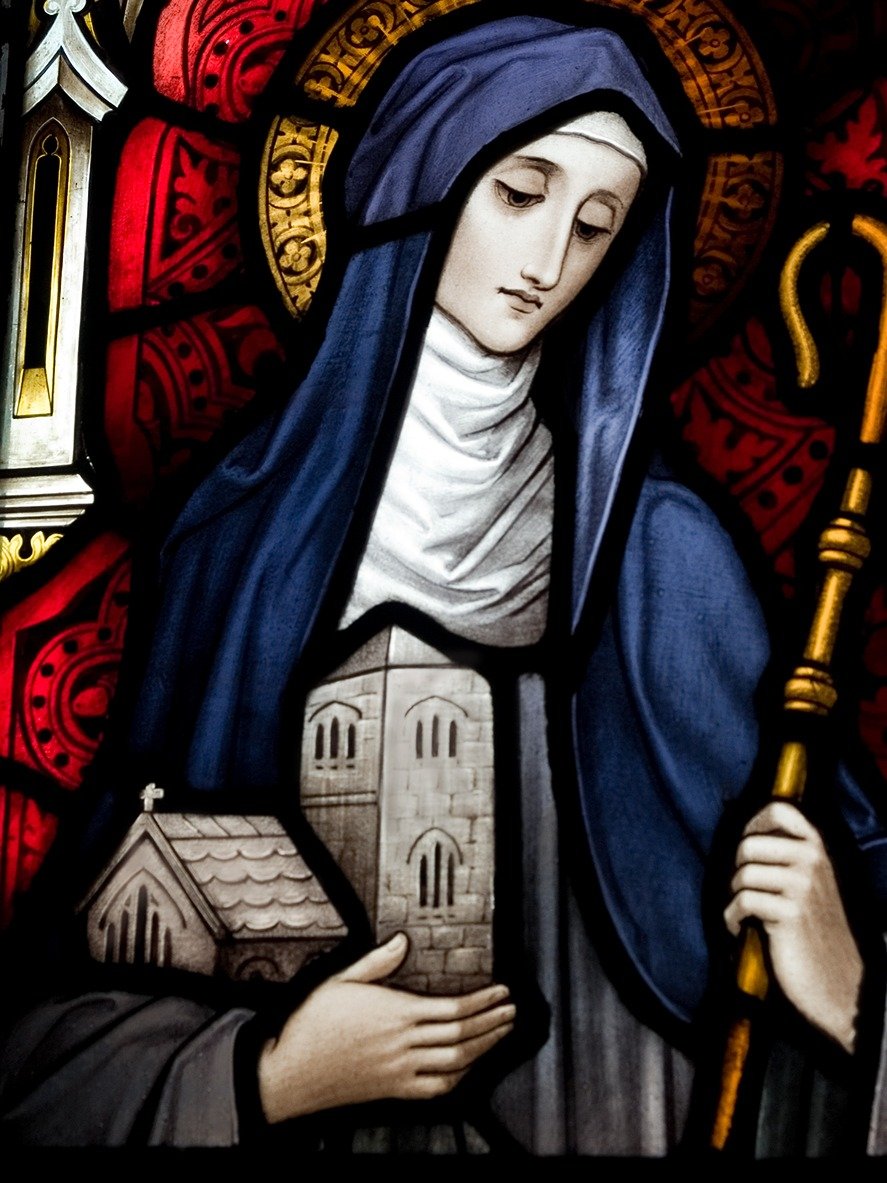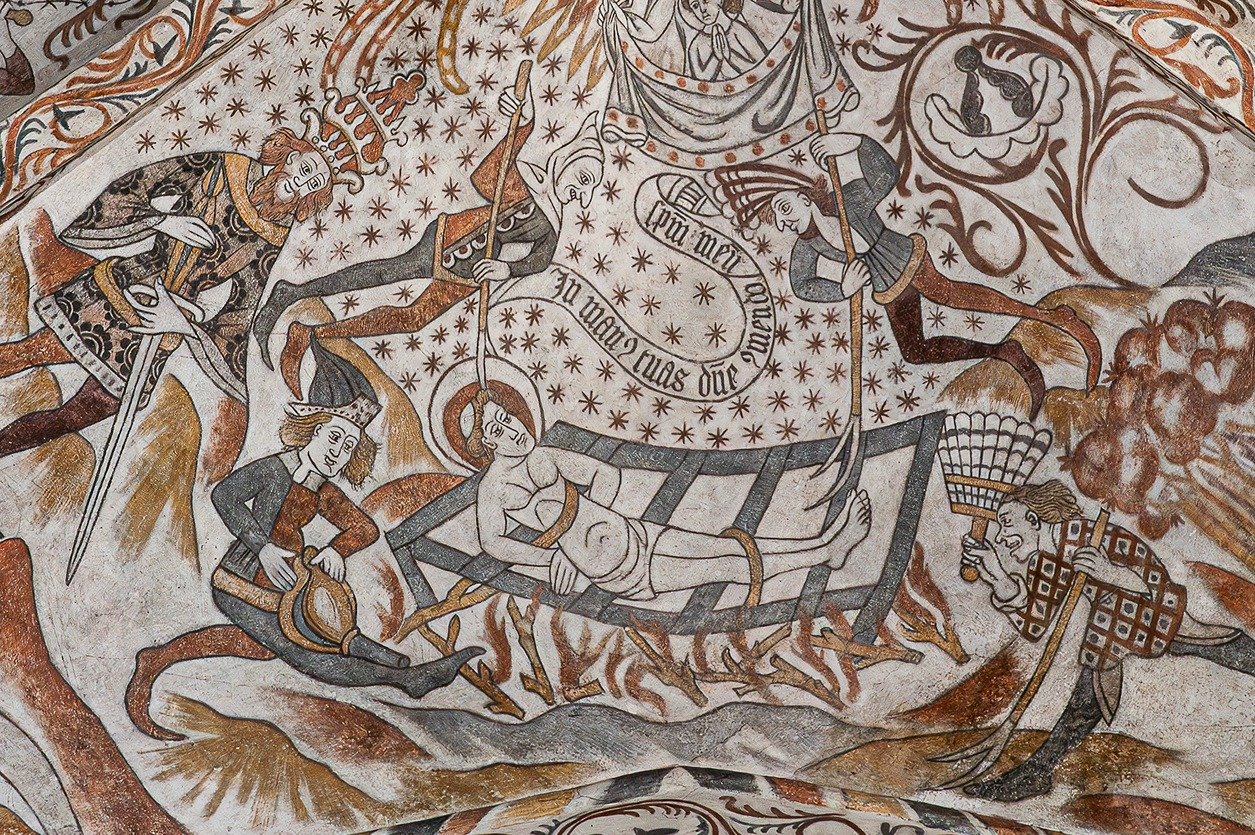Emma writes...
Thoughts, resources and comment from the NHD Editor.
Food glorious food: lessons from the saints!

St David’s Day is celebrated on 1st March. The patron saint of Wales is said to have performed a couple of miracles back in the 6th century. These include making a small hill appear beneath his feet so people could hear him better whilst he was preaching and also returning the sight of a blind monk.
A monk himself, St David is reputed to have only consumed leeks and water, which aligned with the austere and basic lifestyle principles of the monastic community of the time. The leek is widely recognised as a national symbol of Wales, and this may partly be due to this dietary habit.
A diet of only leeks and water is likely to cause concern to any dietitian or nutritionist these days, but back then, these saintly folk held some interesting and unusual relationships with food and drink.
In honour of N&H Week Nutrition and Hydration Week (17th-23rd March), when we ‘celebrate quality food and drink in Health and Social care’, let’s take a look at some of the connections between saints and what we like to consume!
Feed me, feed me now!

Farmers, food producers and greengrocers (which could technically include supermarkets these days) have a wide variety of saintly connections, ranging from broad to some quite specific foodie things.
St. Micheal the Archangel is the main man if you’re a grocer or you’re going to do your food shop. It’s said that you should keep him in mind when doing your food shopping, asking him to ensure the grocer has everything you need.
Similarly connected to grocers, or more specifically greengrocers, St. Isidore the Farmer has a related purpose, ensuring that food is abundant and that there’s enough to eat well.
If dairy products or cheese are your passion, you’ll be joined by St. Brigid of Kildare, pictured left. Back in the 5th century, Bridget was a servant in a pagan Irishman’s dairy farm. Through supporting the poor, sick and needy with produce from this farm, she became known as the patron saint of dairy farmers, cheese and cheesemakers.
Also, hailing from Ireland, St. Abigail (also known as Deborah or Gobnait) has a special connection with bees and honey due to their medicinal and protective qualities (quite literally!). She resided in a French convent for a while after running away from home. Once she decided to return home, a colony of bees travelled with her within the boat. St. Abigail used their honey in her preparations to cure illnesses. However, she also benefited from the hive of bees coming to her rescue when they chased away men who were intent on hurting her.
Meat and two veg...
Butchers, meat eaters, meat, and even bacon all have patron saints. Most notably, St Anthony the Abbott, who was knocking around in the 4th century and has an affinity with livestock, butchers and meat products – particularly pork, including bacon! This was due to his patronage of the Order Hospitallers of St. Anthony, a monastic order which was founded in the Middle Ages and treated those who were poor and ill. Pigs were raised by the order for their support and eventually as meat. St. Anothony’s meat-related patron sainthood also extends to the barbecue and barbecuing, although this may be a modern-day stretch of his duties!
And there was St. Hubert, who initially wasn’t a holy man and decided to go off hunting on Good Friday around the 8th century; despite it being forbidden. Hubert was thrown from his horse after the surprise of being halted by a white stag with a crucifix caught in its antler. Hubert converted to Christianity after this encounter, eventually becoming patron saint of hunters, venison and wild game.
We can’t have patron saints of meat without veggie equivalents, can we?
St. Nicholas of Tolentino was an Italian saint who was a devoted vegetarian and was born in the 13th century. According to legend, he was once offered roasted fowl. He blessed the dish by making the sign of the cross above it, which led to the bird flying out of the window. He was known as a healer and ministered to the poor, the sick and needy.
And who could forget St. Fiacre, or Fiacre of Breuil? Originally from Ireland, he emigrated to France in the 7th century, where he became a hermit and developed a passion for gardening, with a particular penchant for growing vegetables and herbs. His miracles include helping to restore his sister’s sight. In addition to his patron saint connection to vegetables, he’s also the patron saint of haemorrhoids, for which he had a reputation for healing.
Baked to perfection
Bread and baked goods have been staple and luxury foods for centuries, and it's no wonder that there are several patron saints dedicated to the delights of the bakery. In particular, St. Honoré has been linked with baking and bread for over a thousand years. In Paris, his patronal church was the site of the baker’s guild and even today, there are many boulangeries and pastry shops named after him. The Paris Bakers Guild celebrates the feast of this 9th century saint each year in May.
St. Honoré is said to have prayed for a solution to a severe drought which had caused all of the crops to fail. A vision appeared to him in which he was instructed to bake a loaf of bread that would feed the entire city where he lived. By following the vision's instructions, he baked a loaf of bread that was so large that it filled the city's granary and lasted for months.
Coffee and tea.
Whether you’re a coffee lover, relishing the taste of a good Americano, or you’re a tea fiend, enjoying that brew whenever you get the chance, there’s a saint who’s down with your vibe.
St. Drogo was a 12th century multitasking son of a Flemish nobleman. He was reported to have been able to simultaneously attend church services and work in the fields, which no doubt required a lot of energy! He is said to be the patron saint of coffee, coffee houses and baristas as a result. It’s also noted that he’s the patron saint of cattle, so perhaps he was equally as enthusiastic about cows.
For those of you who are fond of tea, Dom Justo Takayama Ukon is the saint for you. This 17th century Japanese samurai and martyr was renowned for his tea passion, enjoying all things tea-related, including the spiritual nature of the Japanese tea ceremony.
Food and laughter are good medicine

Food and laughter are good medicine.
Perhaps one of the most grim finds whilst writing this month’s Emma Writes, is the discovery of St. Lawrence of Rome.
St. Lawrence was a very early saint, dating back to the 3rd century. He was a Roman martyr who was celebrated for his Christian bravery and valour.
He is the patron saint of the poor, cooks and… comedians! A deacon of the Roman church and a servant to Pope Sixtus II, St. Lawrence was persecuted and executed under the Roman emperor, Valerian. Before his arrest, he gave away many of the church’s treasured possessions to the poor and sick.
Legend has it that during his torture and execution, he was slow-roasted on an open fire for some time; he was said to have proclaimed to his torturers, ‘I am cooked on that side; turn me over, and eat’. And this is why he is said to be patron saint of cooks and comedians. The photo (right) shows him being roasted alive on a gridiron, in an ancient wall-painting in Over Draaby church, Denmark.
It’s March, so we can’t forget St. Patrick's Day!
Of course, we can’t. St. Patrick’s Day is perhaps one of the most well-known saints days around the world. Celebrated on 17th March, St. Patrick is a legendary figure from the 5th century who’s said to have driven all of the snakes out of Ireland into the sea.
According to the myth, Patrick was fasting on top of a hill, which was to last 40 days. He was attacked by snakes, he retaliated by chasing them all into the sea.
But didn’t he have any connections with food and drink?
Well, yes, he did! Whilst he wasn’t a fan of snakes, he was ok with pigs. He’s said to have summoned a herd of pigs, which helped to miraculously provide food for starving sailors. During his lifetime, he was subject to harsh living conditions, slavery and near starvation.
Whilst the activities of these legendary figures may not have any real scientific basis, some similar messages and themes are running through them.
Supporting and advocating for those in need or who are sick is important. Whether that’s giving food to the poor, using food to aid recovery or treat ailments, or simply enjoying food. It’s all there amongst these strange and unusual legends, and the same kind of work continues to this day.

Emma has been a Registered Dietitian for over 18 years and has experience in adult and paediatric dietetics. She has been the Editor of NHD for nine years, steering the editorial content and supporting the production process.
Emma currently works in industry.

